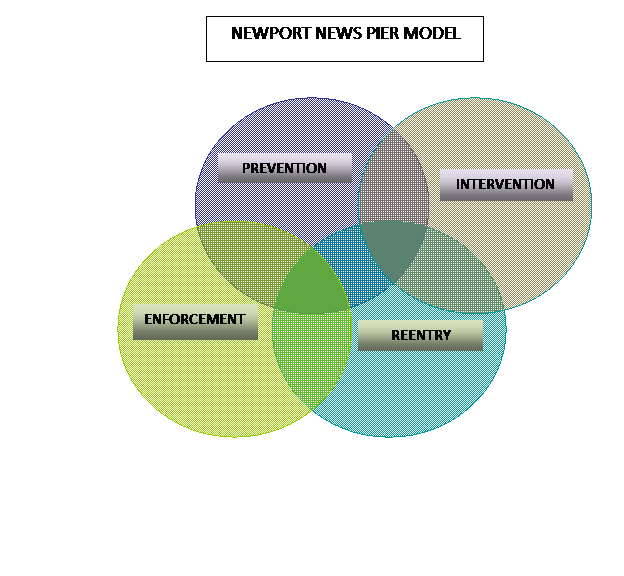No COLORS: 100 Ways To Stop Gangs From Taking Away Our Communities
"No community wants to admit it has a gang problem. Yet that denial and the unwillingness to address youth violence as a community problem will have tragic consequences."
"Nearly Every Community in America has Issues Related to Violence.
We have solutions."
"No community wants to admit it has a gang problem. Yet that denial and the unwillingness to address youth violence as a community problem will have tragic consequences."
Strategic Plan to Reduce Young Adult Violence and Gangs in Newport News, Virginia: P.I.E.R. Strategy
P.I.E.R. is an acronym that stands for Prevention, Intervention, Enforcement and Reentry. This strategy was first published in an article Bobby Kipper published for the International Association of Chiefs of Police in State Association of Chiefs of Police (SACOP) in November of 2007.
Each area of the strategy must be closely examined by community stakeholders to identify risk factors, gaps in service, and strategies to address the issues.
In Newport News, the Mayor’s Advisory Council on Youth and Young Adult Violence was organized to provide oversight and suggestions that will now make up the community’s strategic plan. In addition, the Operational Council conducted separate meetings to make specific recommendations contained in the plan.
The Operational Council is made up of community partners, educators, citizens, business leaders, elected officials and the faith-based community. This working group represents a comprehensive, community-based structure outside of the command and control of city government. The individuals selected to serve on the Operational Council are “boots on the ground” professionals with a proven track record for direct service delivery experience within the community. These individuals go beyond the decision-making process to the ground level implementation process of citizen outreach and service delivery. The Operational Council has been divided into four operational strategic subcommittees:
The initial organizational meetings of the Advisory Council and Operational Council took place on Monday, November 8 and Tuesday, November 16, 2010. The subcommittees met for a period of 4 months November 2010 to February 2011 to identify risks factors, gaps in service and community best practices. This information has been compiled and provided in a final report to the Mayor’s Task Force for consideration and implementation.

| << | Strategic Plan Overview | Prevention | >> |